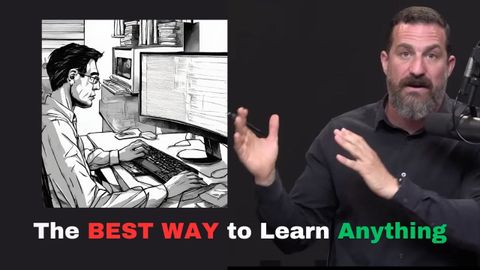如何想學什麼就學什麼 | 安德魯-休伯曼 (How to Learn Anything You Want | Andrew Huberman)
Antony 發佈於 2024 年 08 月 10 日  沒有此條件下的單字
沒有此條件下的單字US /ɪnˈtɛns/
・
UK /ɪn'tens/
US /ˈstrʌɡəl/
・
UK /'strʌɡl/
- v.t./i.奮鬥;掙扎;打鬥;搏鬥
- n. (c./u.)掙扎;掙扎;奮鬥;難題
US /ɪnˈkrɛdəbəl/
・
UK /ɪnˈkredəbl/
- adj.難以置信;偉大的;令人難以置信的;難以置信的
